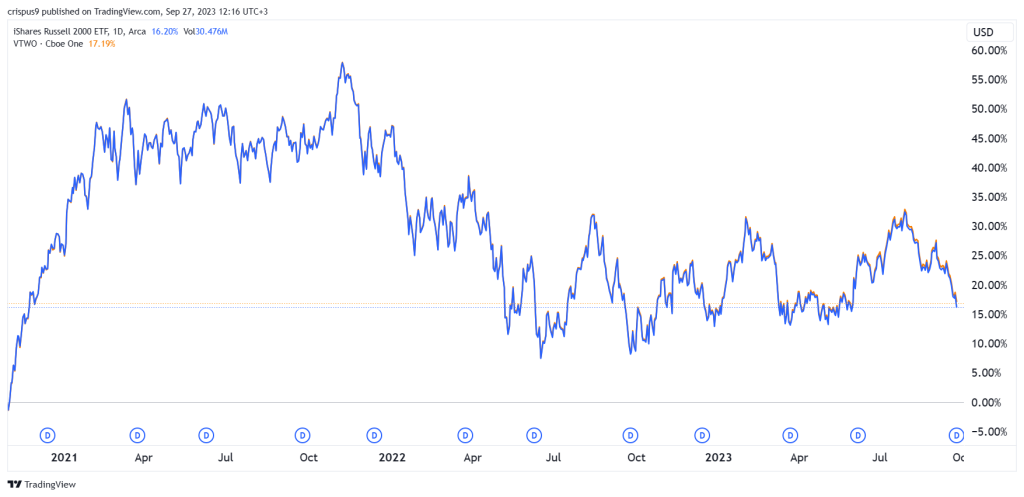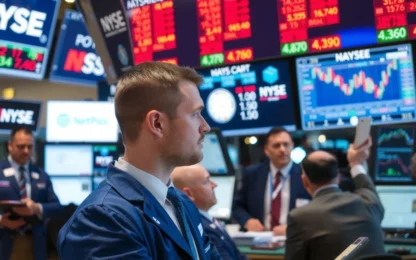
Here’s the biggest risk for Russell 2000 ETFs like IWM, VTWO
- The iShares Russell 2000 ETF and Vanguard Russell 2000 have been under pressure.
- These ETFs are facing numerous risks like UAW strikes and gasoline prices.
- The biggest risk facing the IWM and VTWO is the rising interest rates.
American stocks have come under intense pressure in the past few weeks as the fear and greed index is nearing the extreme fear zone of 25. The Dow Jones has dropped by more than 5.5% from its highest point this year. Similarly, the Nasdaq 100 and S&P 500 indices have slipped by over 8.8% and 7.12%, respectively.
Russell 2000 is underperforming
Copy link to sectionWhile the Dow Jones, S&P 500, and Nasdaq 100 indices have retreated, the small-cap Russell 2000 (RUT) index is doing much worse. The index has crashed by more than 12.13% from its highest point this year and by over 28% from its all-time high.
This underperformance has hurt the key ETFs that track the index. The two most popular ones are the iShares Russell 2000 ETF (IWM) and Vanguard Russell 2000 Index Fund (VTWO). They are similar funds with over $49.65 billion and $6 billion in assets, respectively. Their expense ratio stands at 0.19% and 0.10%.
The IWM and VTWO ETFs, like other American indices are facing substantial risks. As I wrote here, the probability of a recession is higher than what Wall Street expects. In that article, I pointed to the rising delinquency rate, inverted yield curve, and weak consumer confidence.

VTWO vs IWM ETF chart
There are also energy costs as crude oil prices rise, pushing the average gasoline price to almost $4 per gallon. Also, workers are getting more organised, leading to more strikes in the United States.
Fed is the biggest risk for IWM, VTWO
Copy link to sectionThe Federal Reserve is the biggest risk for the IWM and VTWO ETFs. The central bank has already hiked rates from the pandemic low of 0% – 0.25% to between 5.25% and 5.50%. In its meeting last week, the Fed pointed to another 0.25% hike in the coming meeting.
The Fed’s actions are having an impact on all American companies. Some large companies like Apple, Microsoft, Alphabet, and Meta, are making millions of dollars since they invest their huge cash balances.
Alphabet made over $892 million interest income in the last quarter thanks to its $118 billion cash hoard. Meta, the parent of Facebook and Instagram, made over $323 million because of its $53 billion hoard.
Most small cap companies have no this benefit. As a result, they are paying more interest than they are receiving from their investments. Recent data showed that interest expenses of all S&P 600 index jumped to a record high last quarter. Making things worse is the fact that 30% of all Russel 2,000 companies have a floating rate, making rate hikes more painful.
Further, unlike many giant companies, many small-cap companies rely on bank loans. Higher rates and the recent collapse of key banks like Signature and SVB have made many of them to focus on cash preservation. As such, many have switched to private credit, which is often more expensive.
Making things worse is the composition of the fund. Health care accounts for 15% of all companies in IWM and VTMO. The challenge is that most of these firms are in the life sciences sector, meaning they are less profitable. Unprofitable companies tend to underperform in a high interest-rate environment.







